-
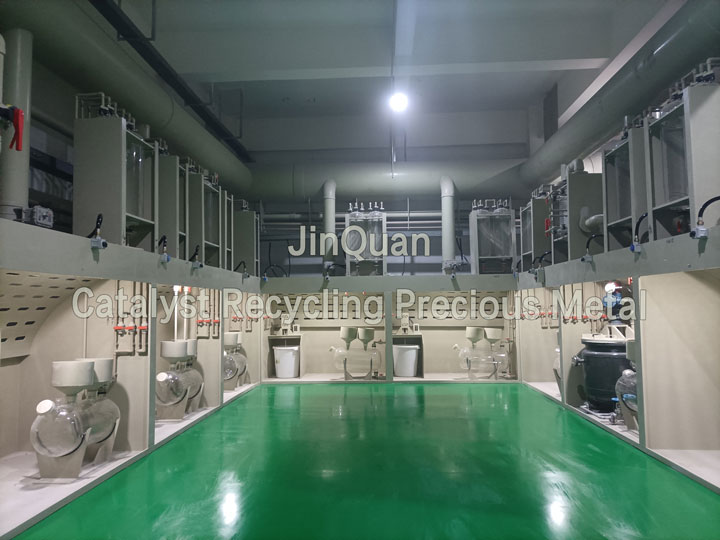 Recovering palladium Carbon Catalyst Process
Recovering palladium Carbon Catalyst ProcessRecovering palladium Carbon Catalyst Process
Thermal Treatment:The palladium carbon catalyst is immersed in a hot water bath and heated to facilitate the decomposition of organic substances within the catalyst, thereby aiding in its recovery.
Acidic Dissolution:The catalyst is submerged in an acidic solution to leach out palladium ions, reducing the organic content.
Basic Dissolution:The catalyst is treated with a basic solution to extract carbon ions, further decreasing the organic material.
Chloride Solution Treatment:The catalyst is placed in a chloride solution to dissolve metal ions, thereby reducing the organic content.
Leaching with Solvent:The catalyst is immersed in a solvent to absorb and remove organic substances, minimizing their presence within the catalyst.
Recovery of Organic Substances:The extracted organic material is collected for reuse, ensuring minimal waste and maximal efficiency.
High-Temperature Decomposition:The catalyst undergoes high-temperature treatment to ensure complete decomposition of organic substances, facilitating effective recovery.
Vapor Extraction:The catalyst is subjected to vapor processing to extract tantalum ions, enabling their reintegration into the catalyst for reuse.
-
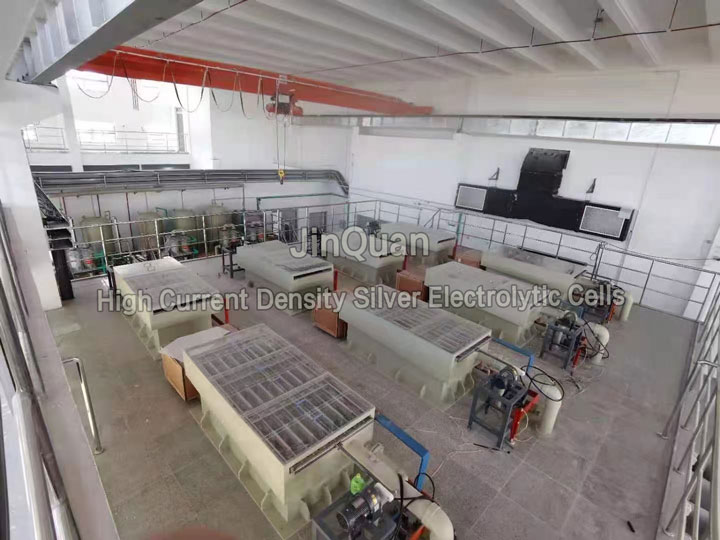 Silver Electrolysis anode slime
Silver Electrolysis anode slimeHow to Process Silver Electrolysis anode slime
The anode slime produced during silver electrolysis constitutes about 8% of the anode's weight and typically contains 50%-70% gold and 30%-40% silver, along with minor impurities. Due to the high silver content, this anode slime cannot be directly cast into anodes for further gold electrowinning. Therefore, measures must be taken to reduce the excess silver content and improve the purity of the gold.
There are two main methods for achieving this:Acidic Dissolution Method:The anode slime is immersed in nitric acid, allowing the dissolution of the excess silver while keeping the gold largely undissolved. The solution is then separated into solid residue (containing high-purity gold) and liquid extract (for recycling the dissolved silver). The residual solid can then be cast into anodes for electrowinning.
Second Electrowinning Process:The anode slime is melted into anodes, which are then subjected to a second round of electrowinning to further reduce the silver content. This step improves the gold concentration in the anode slime, often achieving purity levels above 90%.
Additionally, after dissolving excess silver using nitric acid, alternative methods such as King's Water or Chloride Leaching can be employed to recover gold from the solid residue. These methods include water-based and chloride-based gold leaching techniques, both of which are widely used in industrial applications.
-
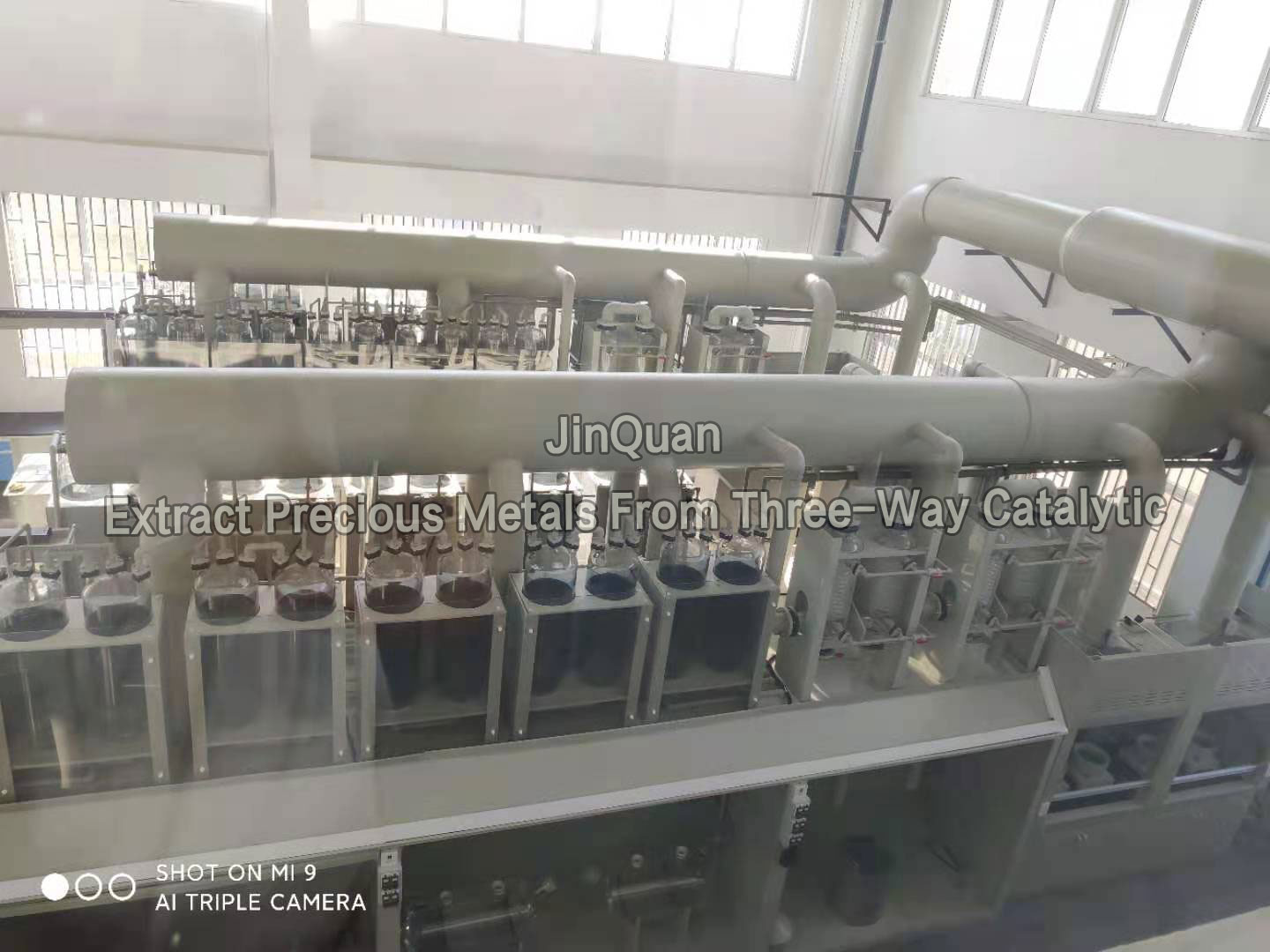 Recovering Platinum Group Metals
Recovering Platinum Group MetalsMethods for Recovering Platinum Group Metals from Used Catalysts
Recovering platinum group metals (PGMs) from used catalysts can be achieved through various methods, each offering its own set of advantages and challenges. Below is a summary of these methods along with key considerations:
High-Temperature Volatilization Method:This method involves controlled high temperatures to vaporize PGMs in their oxidized or chlorinated forms. Specialized equipment, such as absorbing devices, is used to collect the volatile metals. Challenges include the need for precise temperature control and potential costs associated with this equipment.
Carrier Dissolution Method:Strong acids (e.g., HCl, H₂SO₄) or bases (e.g., NaOH) are used to dissolve aluminum oxide carriers, leaving PGMs in sludge. While straightforward, this method may leave residual metals requiring further processing.
Selective Dissolution Method:Solvents are employed to selectively dissolve PGMs without fully dissolving aluminum oxide. This approach holds promise for selective extraction, though the effectiveness and reusability of the solvents require verification.
Full Dissolution Method:Involves completely dissolving both carriers and PGMs into a solution, followed by leaching or ion exchange to recover the metals. While efficient, this method may lead to contamination if not handled properly.
Furnace Melting Method:Metals are separated based on their melting points under high-temperature conditions. PGMs typically have higher melting points than aluminum, aiding in their separation. This method requires careful temperature control for complete recovery.
Burning Method:Specifically tailored for carbon-containing catalysts, this method burns the used catalyst to produce slag, which is then leached using water or hydrochloric acid to extract PGMs. Less energy-intensive but may not be suitable for all catalysts.
Considerations:Integration: Each method may necessitate preprocessing and combination with others for complex catalysts.
Cost-effectiveness: Methods like full dissolution or selective dissolution may have higher upfront costs but offer efficiency in recovery.
Scalability: We need to assess which methods can handle large volumes without losing efficiency.
Environmental Impact: Evaluating toxic byproducts and waste streams for sustainable disposal is crucial.
Conclusion:An optimal approach likely involves a tailored combination of techniques suited to the specific nature of the used catalyst. Further research and development are essential to enhance efficiency and sustainability in PGM recovery processes.
-
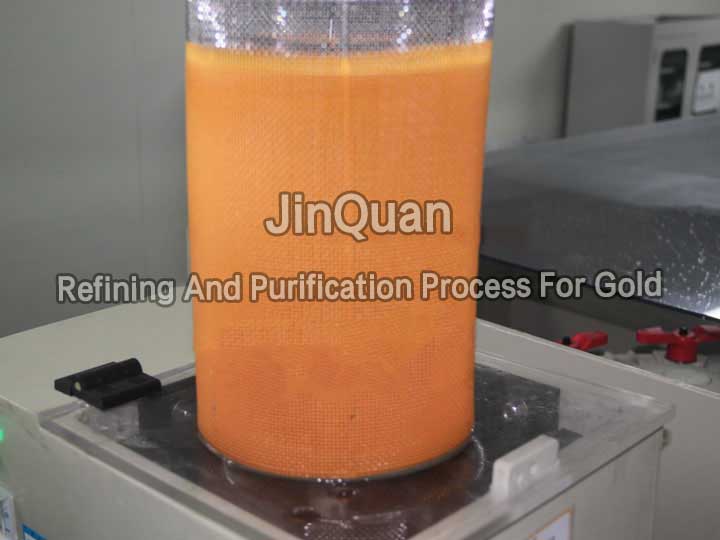 recovery gold from gold-bearing solutions
recovery gold from gold-bearing solutionsThe primary methods used to recover gold from gold-bearing solutions include the following:
Precipitation Method: Commonly employed due to its simplicity and relatively low cost.
Electroplating Method: Widely studied, with cyanide-based, thiosulfate-based, and iodide-based solutions being prominent in electroplating research.
Activated Carbon Adsorption Method: Utilizes activated carbon to adsorb gold from the solution.
Leverage Solvent Extraction Method: Involves using a solvent to selectively retain gold values while allowing other elements to remain in solution.
Ion Exchange Method: Utilizes ion exchange resin to separate gold from other ions in the solution.
The electroplating method has been extensively studied due to its efficiency in recovering gold, especially when dealing with cyanide-based (e.g., KCN), thiiosulfate-based (e.g., Na₂S₂O₃), and iodide-based (e.g., KI) solutions. However, the recovery of gold from low-concentration or multi-ion-containing solutions using electroplating methods often results in poor recovery rates.
The rotating electrolysis method (tangential flow filtration, TFF) addresses issues such as concentration polarization by means of high-speed liquid flow to mitigate adverse factors affecting electrodeposition. This method is effective for solutions with low concentrations of target metal and where the concentration ratio between target and non-target metals is relatively small, particularly in multi-metal systems.
This technique has been applied successfully to the extraction of precious metals such as tantalum, niobium, gold, and silver. However, there are currently no published studies on its application for recovering gold from low-concentration solutions using this method. Therefore, the research presented here investigates the feasibility of employing the rotating electrolysis method to recover gold from a specially prepared low-concentration gold solution, aiming to provide an additional method for gold recovery in such contexts.
-
 Hydrochloric Acid Leaching
Hydrochloric Acid LeachingHydrochloric Acid Leaching, Purification, and Reduction Refining Technology for Niobium Chloride
The current method of refining niobium involves the following main steps:
a. Acid leaching of niobium: Typically results in soluble niobic acid (e.g., HNO₃·nH₂O).
b. Precipitation as niobium chloride: The formation of NbCl₅ or other niobium chloride compounds.
c. Purification: Removal of impurities from niobium chloride.
d. Reduction: Use of a reducing agent to convert the niobium chloride into pure niobium. Hydrochloric acid (HCl) is commonly used for dissolving niobium, while sodium hydroxide (NaOH) solution can also be employed to directly obtain niobium chloride.The purified niobium chloride is cleaned using hot water or ammonia (NH₃) in a repeated washing process to eliminate impurities. Common reducing agents used include active metals, glutaric acid, sodium sulfide (Na₂S), vitamin C (ascorbic acid), and thiourea, among others. The selection of these reducing agents depends on factors such as cost-effectiveness and the strength of their reducing properties.
The reduction process for niobium chloride is a critical step in the overall refining procedure.
-
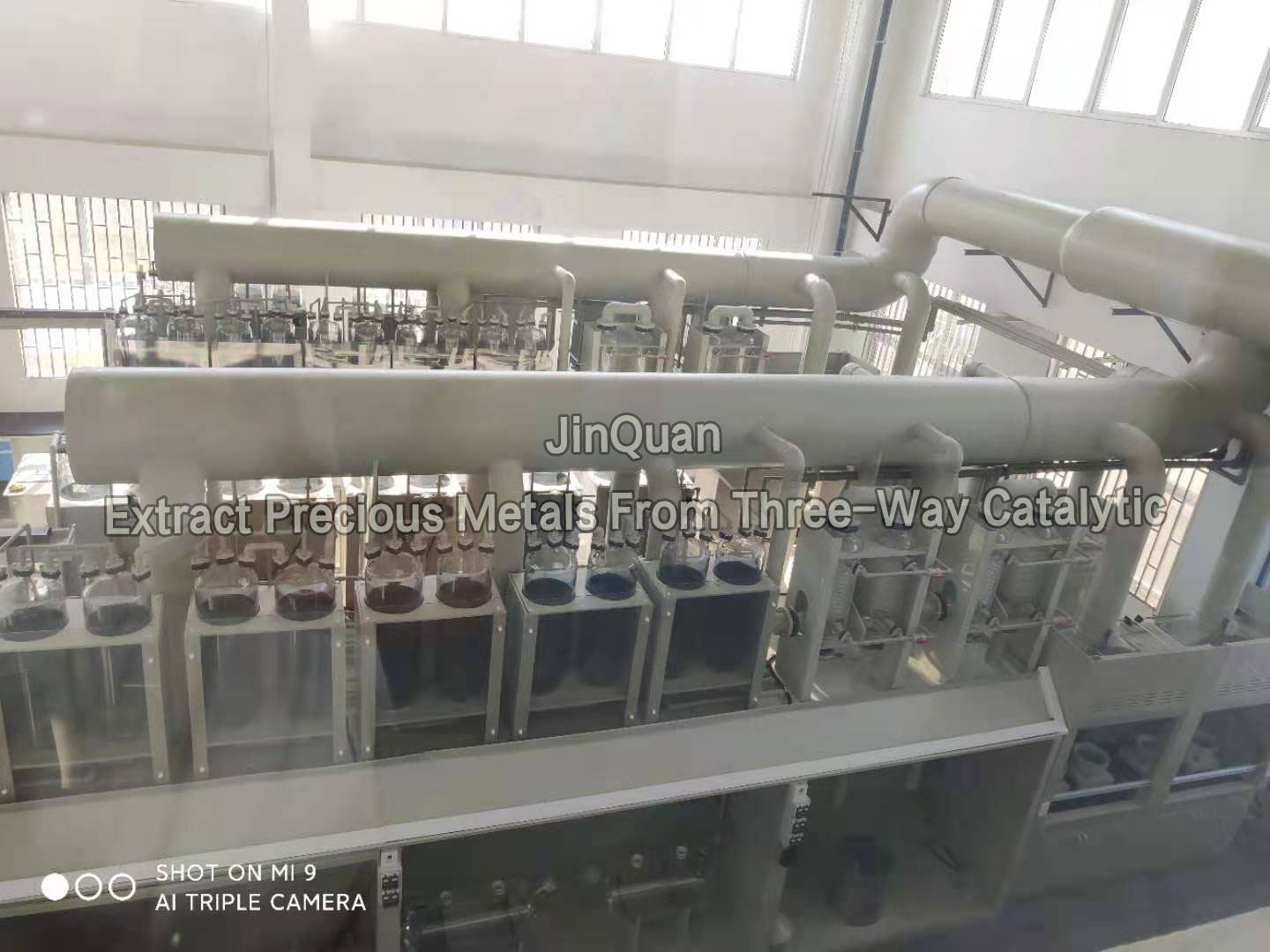 The recovery of platinum group metals (PGMs)
The recovery of platinum group metals (PGMs)The recovery of platinum group metals (PGMs) from used catalysts can be achieved through various methods, each with its own set of advantages and challenges. Below is a concise summary of the key points and considerations:
High-Temperature Volatilization Method:
Effective for PGMs that oxidize or chlorinate at controlled high temperatures.
Requires specialized absorbing devices to collect volatile metals.
Challenging due to temperature control needs and potential equipment costs.
Carrier Dissolution Method:
Uses strong acids (e.g., HCl, H2SO4) or liquid bases (e.g., NaOH) to dissolve aluminum oxide carriers, leaving PGMs in sludge.
Straightforward but may leave residual metals that require further processing.
Selective Dissolution Method:
Utilizes solvents that selectively dissolve PGMs without fully dissolving aluminum oxide.
Promising for selective extraction but effectiveness and reusability need verification.
Full Dissolution Method:
Involves complete dissolution of both carriers and PGMs, followed by leaching or ion exchange.
Efficient but may lead to contamination if not handled properly.
Furnace Melting Method:
Separates metals based on their melting points in high-temperature conditions.
PGMs typically have higher melting points than aluminum, aiding separation.
Requires careful temperature control for complete recovery.
Burning Method:
Specifically tailored for carbon-containing carriers.
Produces "calcined sand" which can be leached using NaOH solution or HCl solution.
Less energy-intensive but may not be suitable for all catalysts.
Considerations:
Integration: Each method may need preprocessing and combination with others for complex catalysts.
Cost-effectiveness: Methods like Full Dissolution or Selective Dissolution may have higher upfront costs but offer efficiency in recovery.
Scalability: Assessment is needed to determine which methods can handle large volumes without losing efficiency.
Environmental Impact: Evaluation of toxic byproducts and waste streams for sustainable disposal is crucial.
In conclusion, an optimal approach likely involves a tailored combination of techniques suited to the specific nature of the used catalysts. Further research and development are essential to enhance efficiency and sustainability in PGM recovery processes.
-
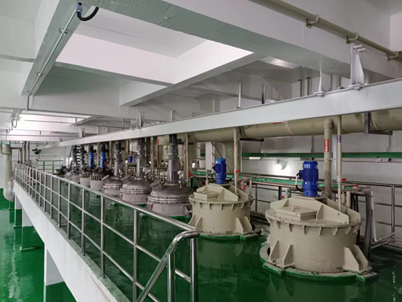 Wet Metallurgical Technology
Wet Metallurgical TechnologyWet Metallurgical Technology:
This wet metallurgical technology is characterized by its flexibility and efficiency. The process for treating electronic waste flows involves placing pre-treated e-waste into an acidic or alkaline solution to react. After the reaction, the solution undergoes separation and deep purification to remove impurities. It then utilizes solvents for leaching, adsorption, or ion exchange. Metals are concentrated through concentration and ultimately recovered via electroplating, chemical reduction, or crystallization methods. -
 Platinum Group Metals Wet Recycling Technology
Platinum Group Metals Wet Recycling TechnologyPlatinum Group Metals Wet Recycling Technology:
The wet recycling of platinum group metals (PGMs) refers to the use of chemical reagents to dissolve PG-containing waste materials, converting the PGMs into chelate ion forms.
This is followed by processes such as ion exchange, leaching, precipitation, and filtration to concentrate and purify the PGMs. The method primarily involves cyanide-based and acid-oxidizer based approaches.
-
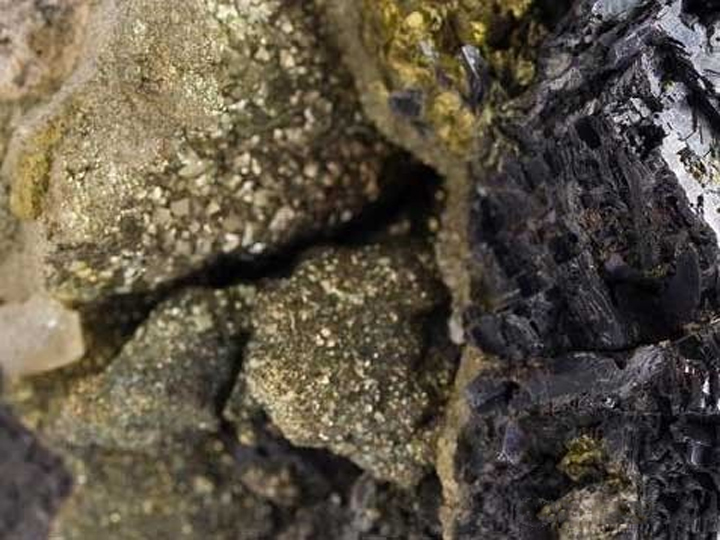 Difficult-to-Treat Gold Mines' BioHeap Leaching
Difficult-to-Treat Gold Mines' BioHeap LeachingDifficult-to-Treat Gold Mines' BioHeap Leaching Pre-Oxidation Method:
The difficult-to-treat gold mine bioheap leaching pre-oxidation method includes the following steps:
1)After crushing the original ore, heap it and perform spray leaching on the poorly recoverable, difficult-to-treat gold mine. Keep the temperature of the leaching solution above 45℃;
2)When the pH of the leaching solution is below 1.5, neutralize the solution to adjust its pH to between 1.5 and 1.9;
3)After neutralization, transfer the adjusted leaching solution to the biofixed bed. The acidophilic bacteria in the fixed bed adsorb and oxidize ferrous ions. Once the solution's reduction potential exceeds 850mV, a high-potential oxidation solution is obtained;
4)The high-potential oxidation solution obtained from step 3 is recycled for use in step 1 until the ore pre-oxidation is complete.
This method is simple and easy to control in terms of process parameters. It effectively promotes the dissolution of large amounts of pyrite, improves oxidation efficiency, and reduces production costs.







